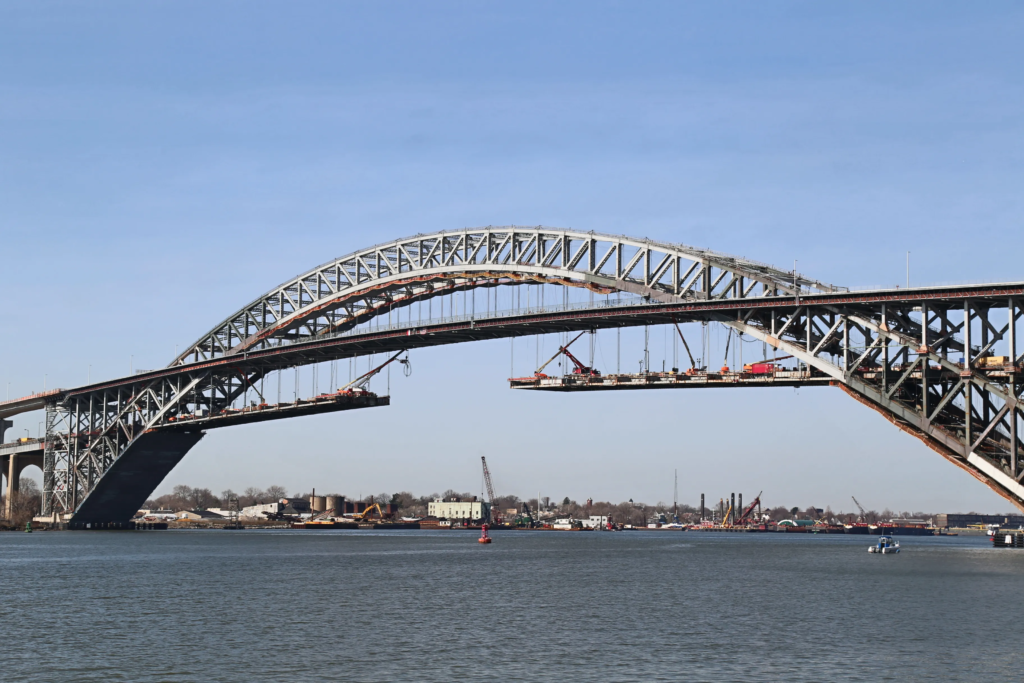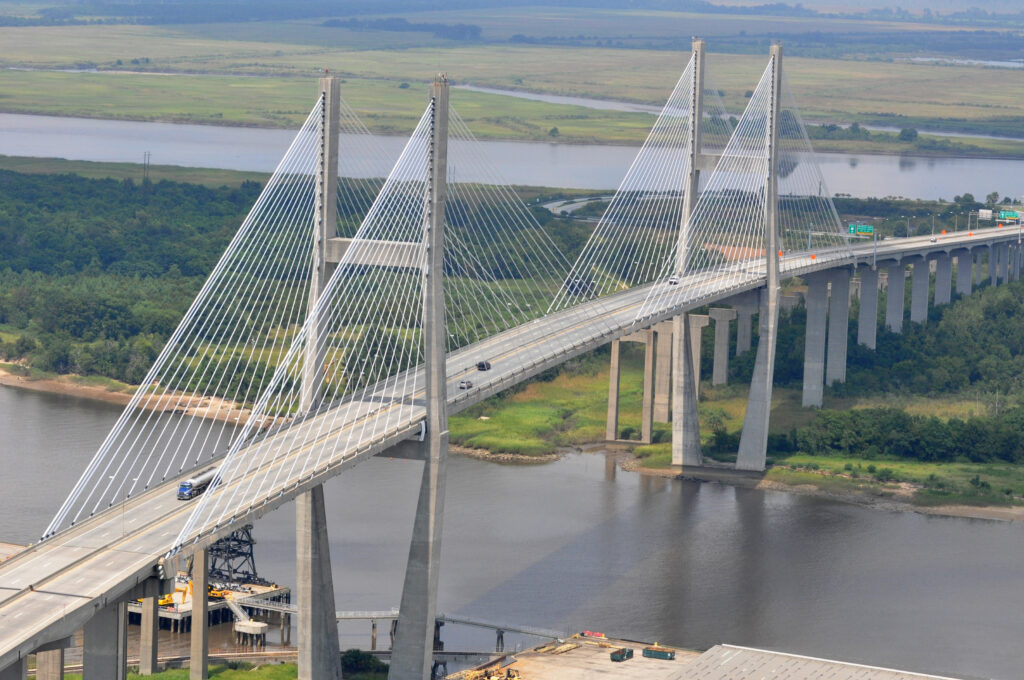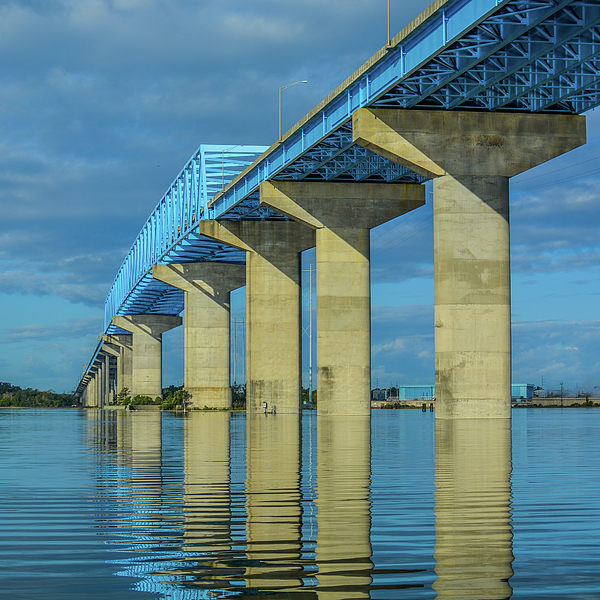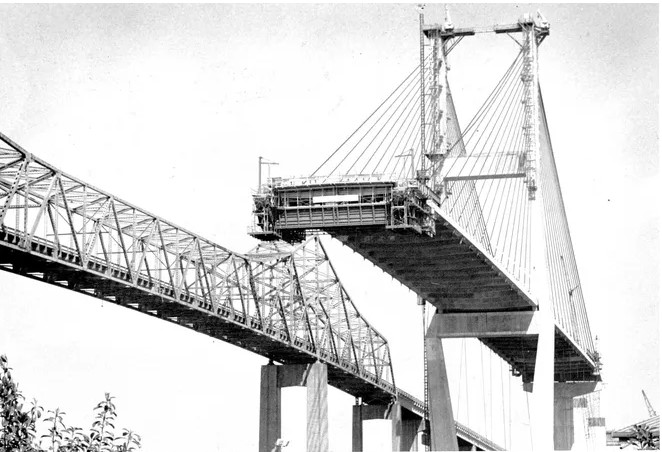Ocean freight continues to be the most cost effective ways to ship large, heavy or bulky items around the world. As the amount of freight needing to be shipped continues to grow, shipping companies continue to build bigger ships capable of carrying more cargo. These ships continue to grow ever wider and taller, necessitating upgrades to the shore infrastructure that support such shipping.
The Panama Canal was recently widened in 2016 to accommodate the growing girth of these ships. Such ships are known as Neopanamax ships – such ships have beams up to 180 feet and drafts up to 60 feet.
As ports, canals and other waterways continue to improve to serve these massive ships, what about the bridges that must be cleared?

The Bayonne Bridge in New York was recently raised to provide more clearance for these ships. Bayonne’s original clearance of 156 feet, depending on the tide, meant that large ships had to resort to unusual means to enter the Kill Van Kull. In 2017, the main arch span over the waterway had its roadway raised to provide 216 feet of clearance. Raising the bridge while still maintaining traffic was not cheap – the overall project cost a staggering $1.7 billion!
Bridge raising involves structurally modifying an existing bridge in order to increase the vertical clearance underneath it. The engineering involved must look at the weight added, the capacity of the existing members, among other factors. Many bridge owners are working with their port partners to weigh the not insignificant costs of bridge modification against the potential economic gains from bridge raising – and for some, it seems, the juice is definitely worth the squeeze.
In November 2023, the Georgia Department of Transportation (GDOT) announced that plans were in the works to raise the Talmadge cable stayed bridge in Savannah Georgia. The bridge, as it stands now, provides 185 feet of clearance for vessels entering the Port of Savannah. This project would not only raise the bridge by 20 feet, it will also replace the existing cables with cables that can be shortened over time.

Carrying US 17 between the City of Savannah and Hutchinson Island across the Savannah River, the Talmadge Bridge is named for Eugene Talmadge, a former governor of Georgia. The original cantilever span was completed in 1953, but eventually became a hazard to vessels entering the rapidly growing Port of Savannah. The Port is fourth busiest port in the United States and is home to the largest single ocean container port on the US eastern seaboard. A new cable stayed span was completed in 1991, but recent port growth has made the 1991 span a hazard to shipping.
In a phased approach, the cables on the bridge will be replaced first. GDOT plans to explore increasing the bridge’s height over time in subsequent phases. GDOT is also commissioning a study to look at eventual replacement of the bridge.
Replacing cables is one thing, raising a bridge is quite another. The bridge was designed to have its cables replaced with traffic on it, which is a typical redundancy built into cable stayed bridges. Most bridges are designed to remain in service should a cable be damaged and need replacement. This could be due to terrorism or a severe traffic accident.
Raising the bridge will have more ramifications than simply shortening the cables. Approach structures will need modification, or at the very least, the cable shortening will need to adjust to geometric grade of the bridge. But 20 feet is quite a bit of change. The bearing seats at the pylons will need some modification as well. It will be interesting to see how this project unfolds. It is unclear how GDOT plans to “raise the bridge over time.”

And bridge raising really is becoming more common. South Carolina wants to raise Interstate 576 in order to accommodate larger ships up the Cooper River. North Charleston Terminal is expecting to more than quadruple the volume of cargo it handles once the Don N. Holt Bridge is raised from its current 155 foot clearance.
Happy New Year from TheBridgeGuy! I’m looking forward to bringing you more bridge engineering related content in 2024.
Views: 441






